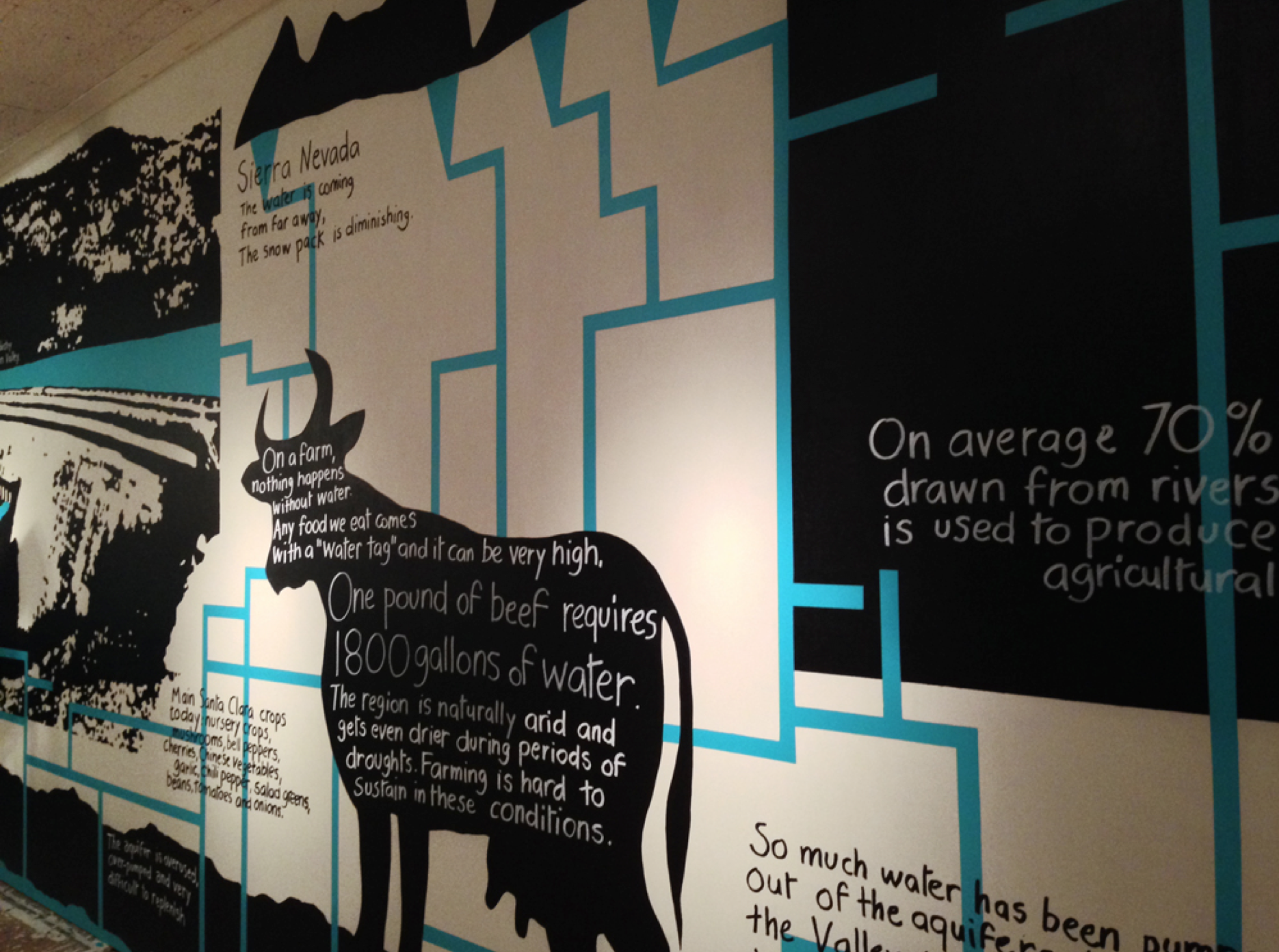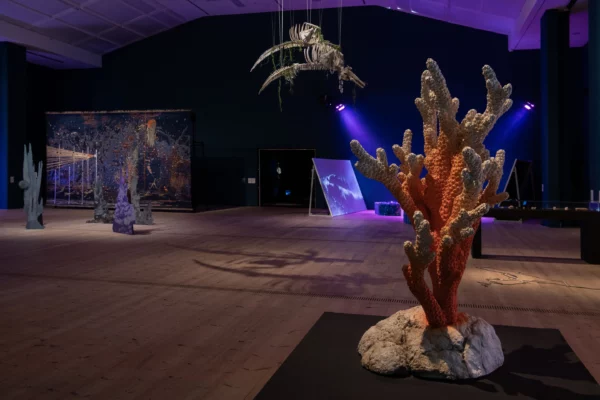
The Earth, the Fire, the Water, and the Winds – CARA
le Center for Art, Research and Alliances (CARA) à New York présente The Earth, the Fire, the Water, and the…

Developed in conjunction with Around the Table, the San Jose Museum of Art’s community initiative, Sip. Do Not Gulp. examines the interconnectedness of food and water throughout Santa Clara Valley’s long history. Created by Bay Area artist Michele Guieu, the site-specific installation calls attention to the shifting patterns and practices of water usage in this area. Once an abundant resource, agricultural development, population increase, and urban sprawl have placed stress on fresh water availability. Comprised of a painted mural, a documentary video, and a symbolic acorn « rug, » Guieu highlights the preciousness of water as a local resource and draws salient connections to food production in this region: if there is no water, there is no food.
Designed specifically for the de Saisset Museum, Guieu’s painted mural extends across three walls, looking at four distinct periods in local history. As you enter the gallery, on the left wall Native California is the focus. When the Ohlone people first inhabited this region, the landscape was replete with water and other natural resources. Water is essential in the life and mythology of the Ohlone people.
The center wall of the mural addresses the Mission and Rancho periods. With the arrival of the missions came the introduction of agriculture. Irrigation systems appeared and their presence and usage only intensified during the Rancho period, where water seemed to be in unlimited supply. Also on the central wall, a documentary video made by Guieu brings together three contemporary voices—an Ohlone descendent, a chef and artist, and a scientist—who lend their expertise to the discussion.
The wall on the right depicts Santa Clara Valley today, a view of San Jose sitting at the heart of Silicon Valley. No longer available in unlimited quantity, fresh water has begun to be regulated and will likely become more so as we struggle to preserve this precious resource.
In the center of the room lies a rug formed of acorns locally hand-picked from different species of oaks. Acorns were an essential food source for the Ohlone. In the middle of the rug a small table is set with a pitcher of water—a reminder that the most important thing on the menu is water. Water is a necessity for farming, cooking, and irrigating—our food supply depends on it.
From the abundant and flowing water of Native California to the present concerns and conservation efforts, water has always been at the center of our lives. It is the most precious resource we have and it needs to be a focal point for discussion. Water availability and usage will continue to become an issue across the planet—fresh water shortages due to population growth, pollution, and access. These problems already exist, even in California, but they may only grow exponentially. There is urgency to engage in this dialogue—it affects everyone.
To encourage this dialogue, Sip. Do Not Gulp. is designed to be interactive. Museum visitors are invited to share stories, commentary, and reflections on the role of water in our lives by posting comments directly onto the surface of the mural. With time, the image created by Guieu will become a forum for discussion—a place where the community can exchange ideas, express concerns, and develop solutions.
Location
The De Saisset Museum at Santa Clara University
500 El Camino Real
Santa Clara, CA 95053-0550
USA
le Center for Art, Research and Alliances (CARA) à New York présente The Earth, the Fire, the Water, and the…
élébrant dix ans d’une collaboration fructueuse avec le Musée de la Chasse et de la Nature, COAL, acteur pionnier et…
L’exposition For All At Last Return, au Baltic Centre for Contemporary Art, réunit un ensemble majeur d’artistes internationaux autour d’une…

